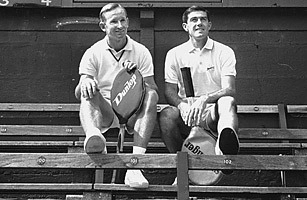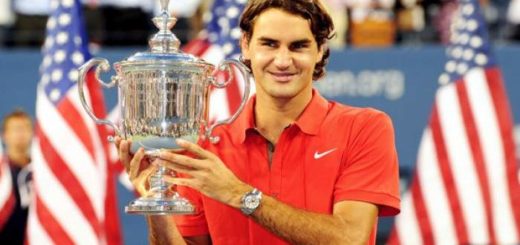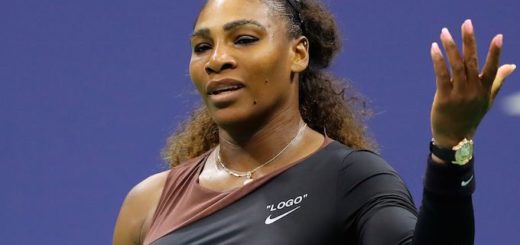What the 2019 Australian Open Men’s Final Means for the Rest of the Season
Uncertainty at the start of the year
First of all, the tennis community was everything but certain about the form of its No. 1 and No 2 players. Novak Djokovic had an amazing comeback year in 2018, winning Wimbledon and the US Open in dominant fashion. On American soil, he didn’t lose a set after the second round, while knocking out the likes of Gasquet, Nishikori and del Potro. Afterwards, he won his fourth Shanghai Masters 1000 without dropping a single service game. Unfortunately, his form seemed to deteriorate ever so slightly when the season got to its end. He lost both the Paris Masters and the Nitto ATP Finals in the final against Khachanov and Zverev, respectively. He had beaten them both easily since racing back to the top of his game at Wimbledon. These two matches led some fans to believe that Novak’s stellar comeback was over. In his first tournament of 2019, Novak seemed to confirm this prediction by losing in the semi-final of the Qatar Open against Bautista Agut. Up to that match, he had a 7-1 head to head against the Spaniard.
Nadal’s 2018 looked like Novak’s season in reverse. He started off the clay season by winning both the Monte Carlo Masters 1000 and the Barcelona tournament, absolutely crushing his opponents in his typical way. After a little hiccup in Madrid, he restarted his winning streak at the Rome Masters and Roland Garros. All these trophies had brought him back to the Number 1 ranking, where he stayed until November. But before he lost his top spot to Djokovic, something terribly worse happened. Nadal got injured (again) and had to drop out of his US Open semi-final against del Potro due to his right knee. He went into recovery, determined to get ready for the Australian Open of this year. But still some doubts remained, as is always the case with Rafa’s injuries.
They deliver, again
The doubts about our two champions were crushed into the ground by their performances in the early rounds of the Grand Slam of Asia. Novak had solid wins against Mitchell Krueger, Tsonga and Shapovalov. Nadal bested him by not losing a single set, a streak which he would continue all the way to the final. The two greats didn’t spend a lot of time on court. Although the Djoker had to fight his way through Daniil Medvedev, he got lucky with an early retiring Nishikori in the quarter-final. In the semis, we got a double matchup between an established champion and a young prodigy. There was little doubt who would win, but nobody could predict the manner in which it would happen. Nadal crushed poor Tsitsipas, 6-2 6-4 6-0, Novak outdid him by sending Lucas Pouille home in 6-0 6-2 6-2. The stage had been set for another great battle Down Under; you could practically hear the memories of their final in 2012.
The final itself
But we wouldn’t get a nearly six-hour-long fight. We wouldn’t get five awesome and gruelling sets. We wouldn’t even see Nadal break Djokovic’s serve once. The final of the Australian Open 2019 became both anticlimactic and a strangely hypnotizing domination by the Serb.
Even a toddler could quickly notice something was off about Nadal’s performance. He won only one point in the first twelve, losing a service game after an impressive 67 consecutive holds. Meanwhile, Djokovic raced on, losing only one point on serve in the first set. After a measly 36 minutes, the harsh reality of the scoreboard read 6-3.
Rafa seemed to have motivated himself again at the start of the second set, and the roar from the crowd when he held his first two service games was telling: maybe we’ll get a battle after all. The Spaniard was hitting a lot of his signature topspin forehands down the line to avoid Novak’s impeccable backhand, and it worked…at least for a while. Because after a lob by Nadal that was a few millimetres long, Djokovic was up a break. And he would make it a dry 6-2. Returning Nadal’s redesigned serve that ripped through opponents so easily in the previous rounds, back to his feet in an instant. Stepping into the court to take the balls early, finding the lines on nearly every single shot. This was classic 2011 Djokovic—maybe even better.
And the slaughter would continue. Nadal won the first point of the third set in spectacular fashion, chasing down a dropshot. The Djoker just tried again and won the next point in an even more incredible way. With another one of his majestic backhands, he broke Nadal’s serve to go up 3-1. By this point, you could see the despair on the faces of all Spanish fans. It would be another defeat, only this time way earlier than on that scorching hot night in 2012. Just 2 hours and 4 minutes after the two gladiators entered the arena, Djokovic fell to his knees. 6-3 6-2 6-3. He had done it again for the record-breaking seventh time.
The reactions after the match were ones of pure idolatry. Mats Wilander said, “I believe he has the game and the mindset in slams that he can win literally all four this year, I really do.” Pat Cash, another eighties legend, called Novak’s game “absolute perfection.” Even Nadal admitted that his best tennis may not have been enough to beat Djokovic on Sunday.
What does this mean for the rest of the season?
First up, Novak Djokovic is back on top of his game, and it will take a whole lot of superb tennis or -God forbid- an injury to take the number one spot away from him. Defensively, he’s as good as ever, running down every ball and recovering in no time. He’s also constructing every point in such a perfectly sound way; it seems like he’s playing a chess game: building up to the checkmate stroke again and again. While doing all of this, he’s making an incredibly small amount of mistakes. Against Nadal, he hit nine unforced errors. Against Pouille in the semi-final, he hit just five. Without getting too crazy, I think it’s safe to say he will add another Grand Slam to his total of 15 this year. Probably the US Open, and Wimbledon is looking very possible too. I’m holding back to agree with Wilander, just because there’s a ton of players out there with a playing style perfectly suited for clay, and Djokovic hasn’t played a clay tournament since the French Open last year.
Secondly, Rafael Nadal has made some incredible progress since retiring from the US Open with that terrible knee injury. He said that he wasn’t able to give everything all the time at the AO. And still, he cut through the whole field like a hot knife through butter. His newly-refined serve was doing great; it allowed him to spare his energy and his knee for the return games. In his first six games in Melbourne, he won more than 80 percent of his first-serve points, and he averaged a speed of 115 mph (185 km/h) compared to 110 mph (177 km/h) at last year’s US Open. I believe that as his fitness gets back to its best, he can make a run for another successful clay season. Heck, we might even see an unbelievable twelfth title at Roland Garros.
Last but not least, the gap between the Big 3 and the Next Gen players isn’t at all closed. 2018 seemed very hopeful for the young guys, with Daniil Medvedev, Karen Kachanov and Alexander Zverev winning several titles. We also saw the breakthrough of Alex de Minaur, Frances Tiafoe and Stefanos Tsitsipas. But as the incredibly lopsided semi-finals show us, they still have a long way to go to compete with the absolute masters of this era. I think 2019 will become another year of domination by Djokovic, Nadal and, let’s hope, Federer.



